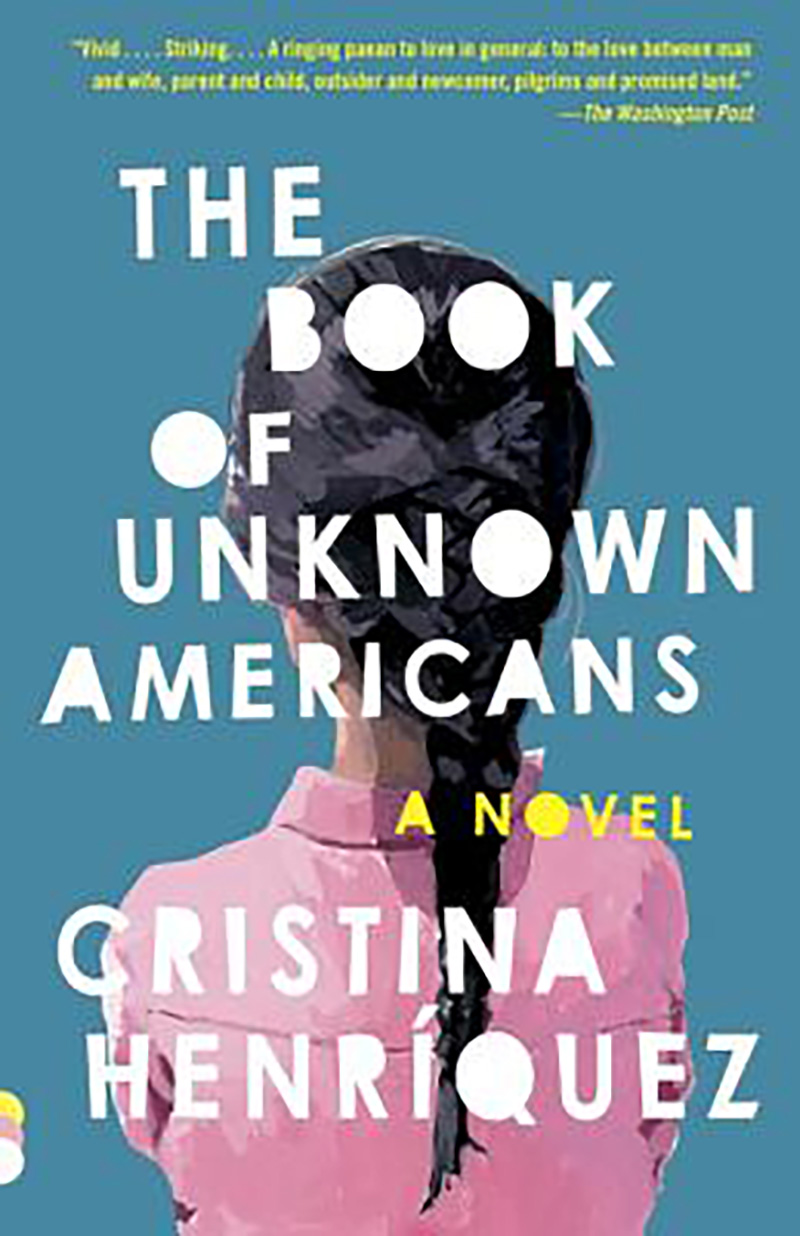
REVIEW: ‘The Book of Unknown Americans’
“The Book of Unknown Americans” by Cristina Henríquez highlights relatable subjects such as moving to a new country and racism but in a way that ventures from the beaten path. In it’s most basic form, the novel tells the love story of two teenagers brought together by complicated circumstances.
Throughout “The Book of Unknown Americans,” the narrative is told via multiple first-person accounts. From the start, it is established that the main character, Alma Rivera, is moving to the United States from Mexico with her husband, Arturo, and their teenage daughter, Maribel. Maribel suffered a brain injury following a fall and is left with limited cognition. Thus, her parents leave behind a well-off life in Pátzcuaro in order to get Maribel into one of the best-recommended special needs schools. The move, however, presents many obstacles such as Arturo obtaining work, Alma attempting to learn English and Maribel adjusting to a life far from comfort.
Once settled into their small run-down apartment in Delaware, the family of three meets a variety of characters living in the same complex. Interestingly, every resident has a unique story told in short chapters throughout the novel. Something to take note of is the array of ethnic backgrounds including characters whose roots stem from Venezuela, Panama, Puerto Rico and many other Latin nations.
Although the novel is centered on the growing connection between Maribel and her neighbor, Mayor, the real intrigue lies in the strong character development. The truth is, what Henríquez lacks in presenting a love story, she excels in turning the majority of her characters into interesting individuals.
As a person of Mexican descent, reading this novel presented mental flashbacks to how members of my family interact. There is a relatable element that Henríquez effortlessly captures as she breathes life into the Latin characters.
For instance, the back and forth between the neighbors at the Christmas party is light-hearted with layers of pride for one’s home country. In addition, the dialogue amongst families behind closed doors reveals the truth of how one’s culture impacts nearly all interactions with loved ones.
The themes of Americanness, belongingness and the racism involved within immigration are written in ways that are recognizable without being overly obvious. Arriving and settling into a new location, especially somewhere far away from one’s comfort zone, presents challenges that can ultimately take a toll on a family.
Throughout the novel, the Rivera family’s struggle to make ends meet and find the bright side of life. Much of the Rivera’s increasing contentment with their living arrangements stems from the bonds formed with their neighbors. Although all are Latino, their backgrounds are different; their ability to relate to one another stems from sharing similar goals and aspirations.
Henríquez is very selective in how she approaches the subject of racism. Rather than presenting multiple characters with a mild dislike of Latinos, she places a chilling hatred into two specific characters – Garrett Miller and his father.
Garrett Miller is the epitome of true racism in America. Throughout the novel, Garrett is depicted as a rebellious teen who pops in and out of the narrative taunting and bullying the main characters. This eventually leads to Garrett taking advantage of Maribel’s traumatic brain injury by sexually assaulting her. Eventually, his assumption that no one would report it due to the Rivera’s social status brings the novel slowly to its climax.
Ultimately, this begs the question of whether Garrett would have assaulted Maribel is she has been white or without a traumatic brain injury? While the motive is never clearly stated, it can be presumed, through his interactions with the main characters, that Maribel’s ethnicity, status and limited cognition made her easy prey for Garrett.
In one of the more memorable and haunting moments of the narrative, Garrett places his hand in the form of a gun to Alma’s face after she warns him away from Maribel. The scene itself is quick, but the impact is gut wrenching as it brings to mind the harsh realities racism emanates.
While Henríquez develops the book’s characters in a way that makes them relatable via the narrative involving first-person accounts by various apartment occupants, the real struggle lies in differentiating the various cultures. For the most part, the Latin characters are all similar even though they come from various parts of North and South America. While Henríquez made a solid attempt at providing much sought after diversity amongst Latinos, the end result left the title of the book to be very fitting.
Despite its ability to connect readers, regardless of cultural and ethnic background, “The Book of the Unknown Americans” only scratches the surface of complex ethnic differences within the Latin culture. Although the novel has its weak areas, especially in terms of making the central love story filled with clichés, Henríquez delivers a book inspiring hope and overall connectivity.
One recommendation would be to download the audio book version. The narration, voiced by alternating readers, brings to life the words on the page and makes the first-person accounts feel more realistic.
